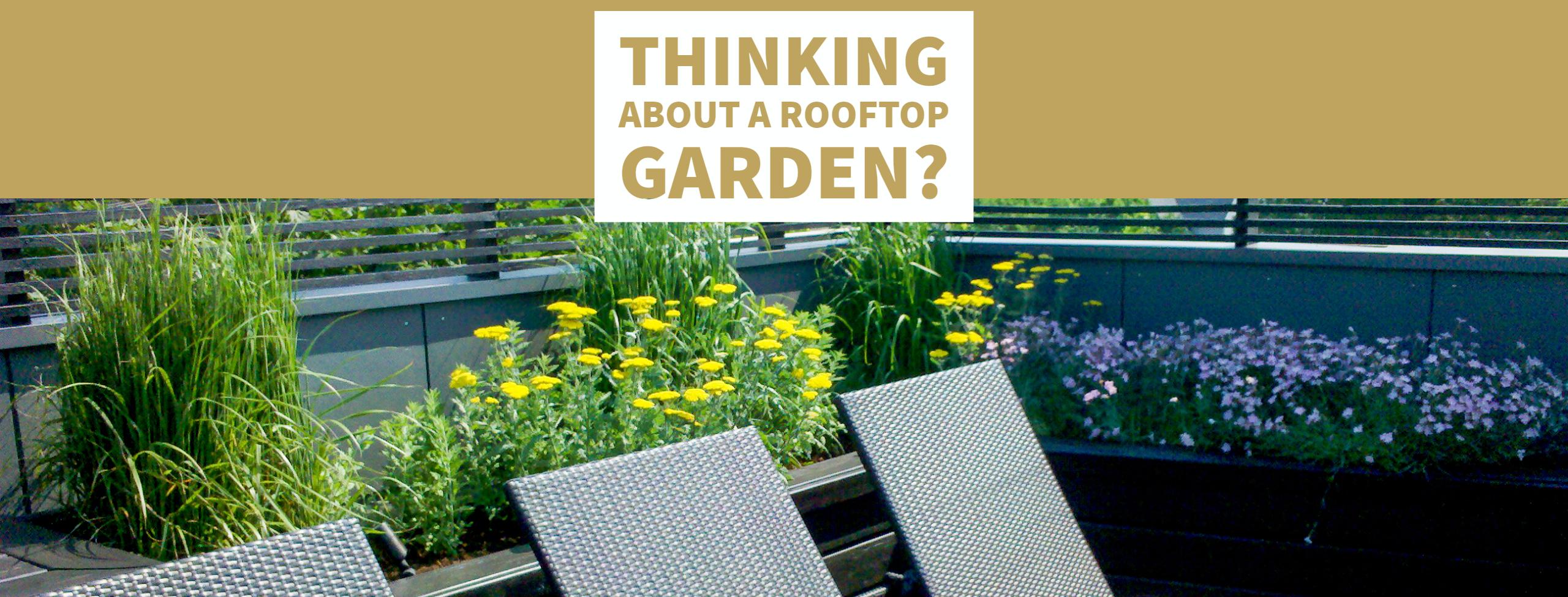
When You’re Thinking About a Rooftop Garden…
Rooftop gardens are really nothing new. That said, as urban space gets tighter and as people learn more about the advantages of converting rooftop space to green space, they are becoming more popular.
We’ve done quite a few rooftop gardens here in the Chicago area, and owners love the results. Read on to learn a little more about the plusses of rooftop gardens and how to get started.
Rooftop Garden vs. Green Roof
In case you are unsure, we’ll quickly talk about the differences between a rooftop garden and a green roof.
Green roofs are building roofs that are partially or completely covered with a waterproofed membrane, a growing medium (like soil) and vegetation. Green roofs may also have an irrigation system installed. Among their plusses, green roofs help manage water run-off, act as an insulator for the building, work to manage noise pollution, reduce urban pollution and heat, increase the enjoyment of outdoor space, and provide a space for native wildlife and urban agriculture.
Some of the challenges of installing a green roof include structural evaluation for load considerations (all of that soil and water are heavy!), plumbing consideration and access to the roof.
Rooftop gardens are also garden and leisure areas that top buildings and garages, but here the plantings are done in containers. The benefits of rooftop gardens are similar to green roofs, minus the insulating properties of a green roof. Obviously, installing a rooftop garden is the simpler of the two urban-friendly undertakings.
So now that you know the difference, how can you begin planning a rooftop garden?
Think about the following items:
- If you’re doing it yourself, you need to find out about any building codes that apply to your project. As well, if you have a landlord, you must get permission from the building’s owner before proceeding.
- Next, you’ll need to ensure that the structure where you are considering the garden can support the load of your new project. This task must be performed by a licensed professional.
- Third, determine how you’ll be able to access the new space.
- Consider exactly what you want to do with the space. Will you create an urban garden, a relaxing oasis furnished with outdoor seating or both?
- Do you need to install screening for privacy? There are many ways to do this, including hedges, fences, green walls, trellises, sail shades, and umbrellas.
- Fifth, consider how you’ll be able to provide your new space with water.
- Next, consider the elements that you must plan for in your rooftop garden. Sun, wind and heat are players in what you’ll plant and install.
- Consider whether you’ll want electricity in your space.
- Will anyone else have access to your space? If so, consider that in your planning.
Need help planning and installing your rooftop garden? We’re happy to consult with you and to offer an estimate. Contact us here.

